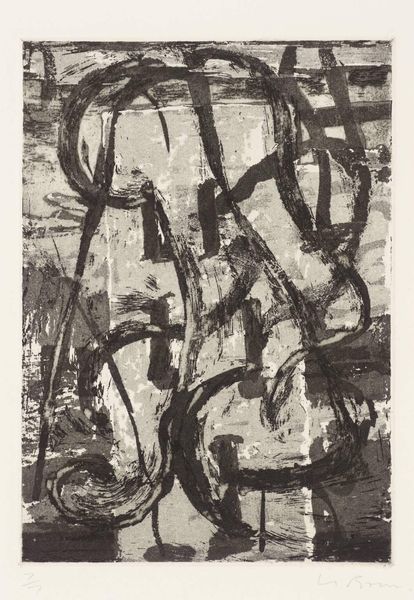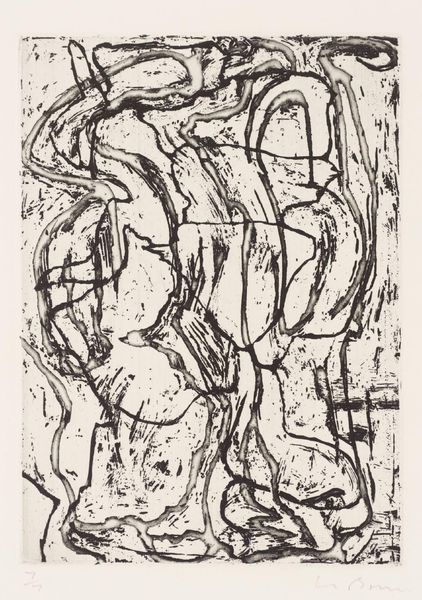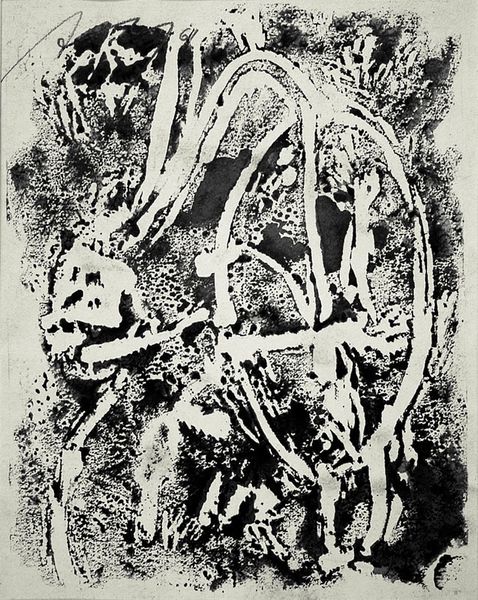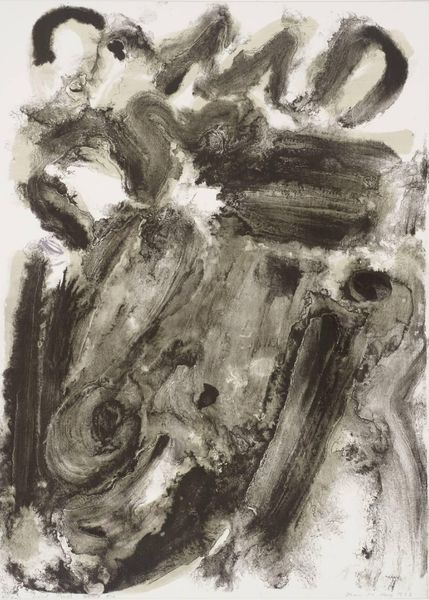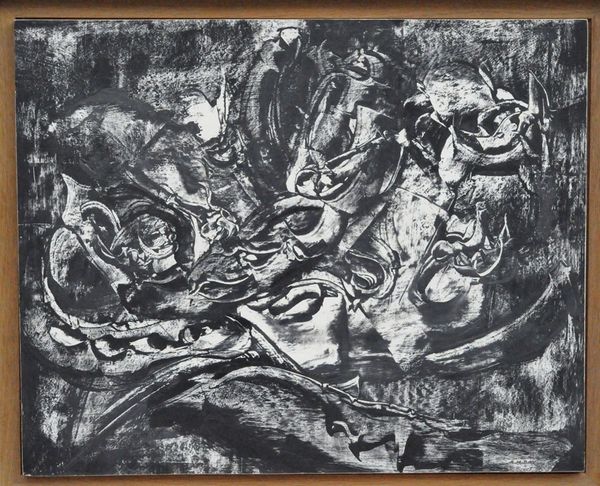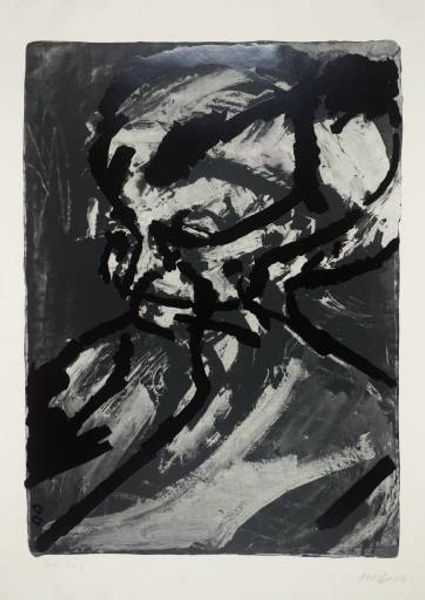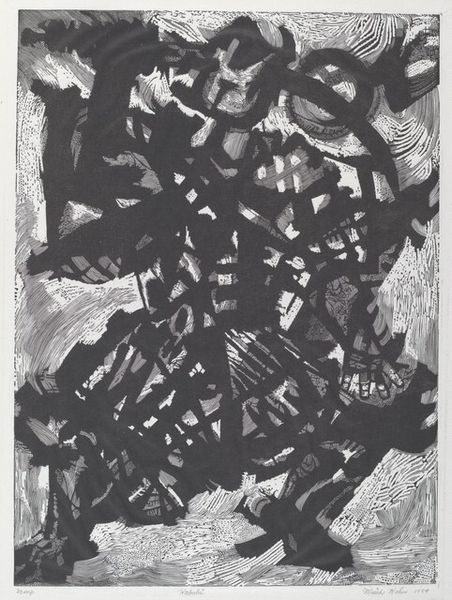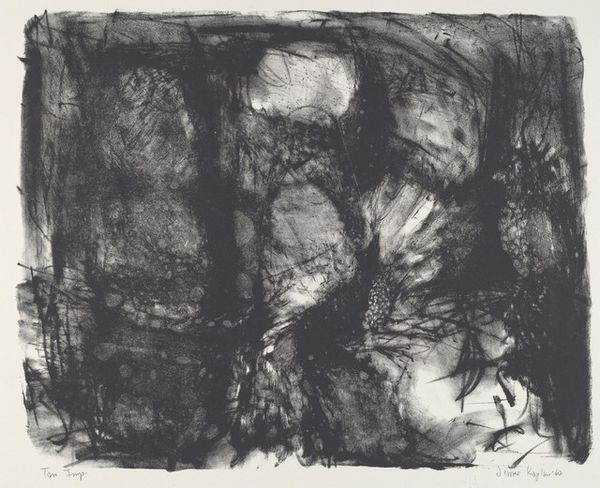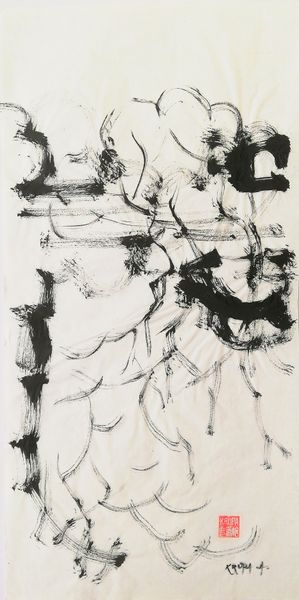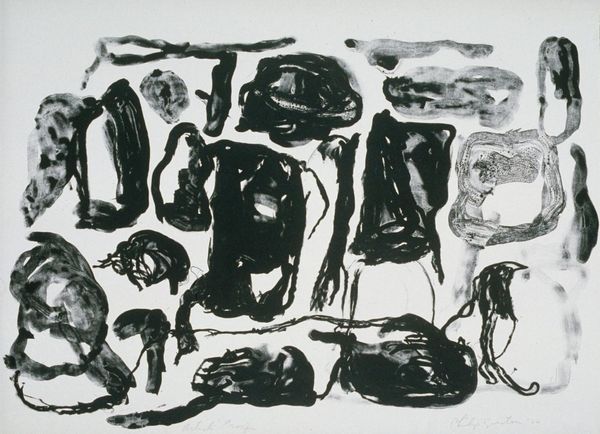
Dimensions: image: 650 x 485 mm
Copyright: © Willem de Kooning Revocable Trust/ARS, NY and DACS, London 2014 | CC-BY-NC-ND 4.0 DEED, Photo: Tate
Curator: Willem de Kooning's "Landscape at Stanton Street," held here at the Tate, presents us with a frenetic, almost chaotic scene rendered in stark blacks and whites. Editor: My initial reaction is one of disorientation. It feels…turbulent? Like peering through a rain-streaked window at a city in perpetual motion. Curator: That's a very evocative way to put it. De Kooning really pushes the boundaries of representation here. The gestural marks, the drips and splatters, create a sense of immediacy, a raw energy that's very characteristic of his work. Editor: Absolutely. The absence of color heightens the emphasis on form and texture. It's a dance of light and shadow, but what exactly *is* it a landscape of? Curator: Well, "landscape" is perhaps a bit of a misnomer. It's more of an emotional landscape, a visceral response to the urban environment. De Kooning lived on Stanton Street, and this piece captures the grittiness, the constant flux of the neighborhood. He is exploring the interiority of his own feeling as a man in a place. Editor: I see. So, it's less about topographical accuracy and more about conveying a feeling, an experience. A deeply personal, almost abstract interpretation. It certainly makes me rethink what a landscape can be. Curator: Precisely. And for me, that's what makes de Kooning so compelling—his ability to transform the familiar into something utterly new and challenging.
